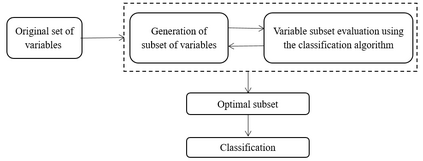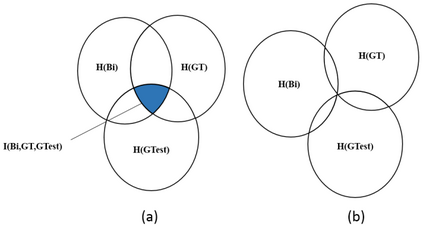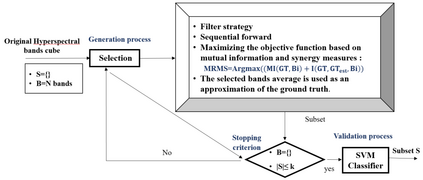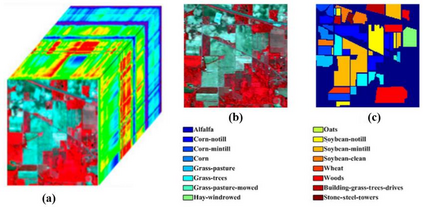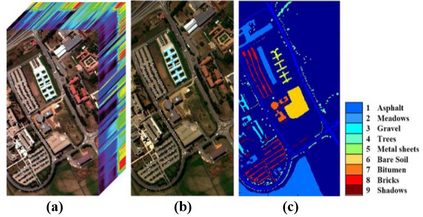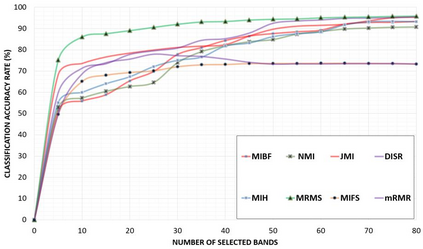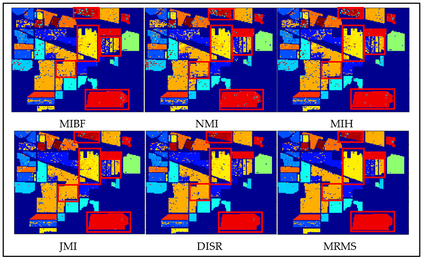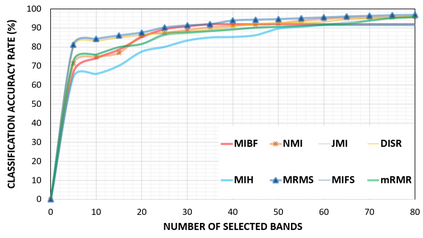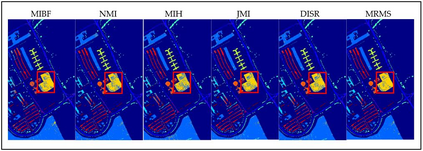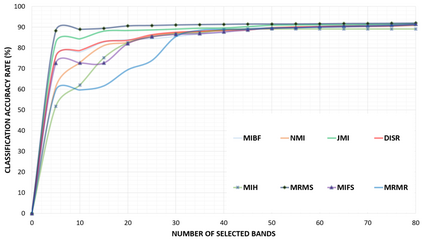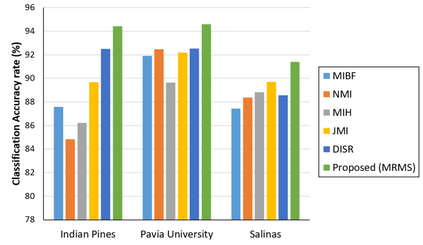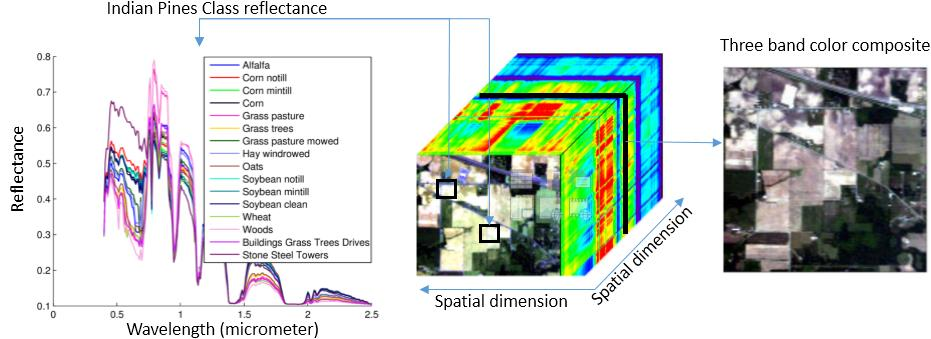Over the past decades, the hyperspectral remote sensing technology development has attracted growing interest among scientists in various domains. The rich and detailed spectral information provided by the hyperspectral sensors has improved the monitoring and detection capabilities of the earth surface substances. However, the high dimensionality of the hyperspectral images (HSI) is one of the main challenges for the analysis of the collected data. The existence of noisy, redundant and irrelevant bands increases the computational complexity, induce the Hughes phenomenon and decrease the target's classification accuracy. Hence, the dimensionality reduction is an essential step to face the dimensionality challenges. In this paper, we propose a novel filter approach based on the maximization of the spectral interaction measure and the support vector machines for dimensionality reduction and classification of the HSI. The proposed Max Relevance Max Synergy (MRMS) algorithm evaluates the relevance of every band through the combination of spectral synergy, redundancy and relevance measures. Our objective is to select the optimal subset of synergistic bands providing accurate classification of the supervised scene materials. Experimental results have been performed using three different hyperspectral datasets: "Indiana Pine", "Pavia University" and "Salinas" provided by the "NASA-AVIRIS" and the "ROSIS" spectrometers. Furthermore, a comparison with the state of the art band selection methods has been carried out in order to demonstrate the robustness and efficiency of the proposed approach. Keywords: Hyperspectral images, remote sensing, dimensionality reduction, classification, synergic, correlation, spectral interaction information, mutual inform
翻译:在过去几十年里,超光谱遥感技术的发展吸引了科学家对各个领域的兴趣。超光谱传感器提供的丰富和详细的光谱信息提高了地球表面物质的监测和检测能力。然而,超光谱图像的高度维度是分析所收集数据的主要挑战之一。噪音、冗余和不相关的波段的存在增加了计算复杂性,诱发休斯现象并降低了目标的分类准确性。因此,维度的减少是应对维度挑战的一个必要步骤。在本文件中,我们提议了一种新型的过滤方法,其基础是最大限度地利用光谱互动测量以及支持矢量机来减少和分类地球表面物质。拟议的马克斯特光谱图像(HSI)的高度维度是分析的主要挑战之一。拟议的马克斯相关性、冗余和无关的波段将光谱协同性、冗余和相关性的计量结合起来,我们的目标是选择能波段的最优化的波段,以准确分类监督的场景材料。实验结果是使用三种不同的超光谱数据集进行:“印度Pine”、“Parvia Unial” 和“SISA级“递解度” 和“SISISA级“Servial” 的比较、Servial” 和“Servial” 的比、“Seral” 和“Servial” 的比、“SISA” 和“Siral” 和“SIS 和“SIS” 的比、“SIS“SIS“SAL” 的比、SAL” 的比、“SIS” 的方法提供了“SIS的“Siral” 和“Siral” 和“Siral” 的“SIS” 的“SAL” 和“SAL的“SLA” 的“S” 的比、“SLA” 和“SLA” 的比、“SAL” 的比、“S” 和“SAL” 的“SIS” 的“SIS” 和“SLA” 和“SLA” 和“SLA” 和“S” 的“ 的“ 的“SAL的“SA” 和“SLA” 和“SLA” 和“SLA” 和“SAL


